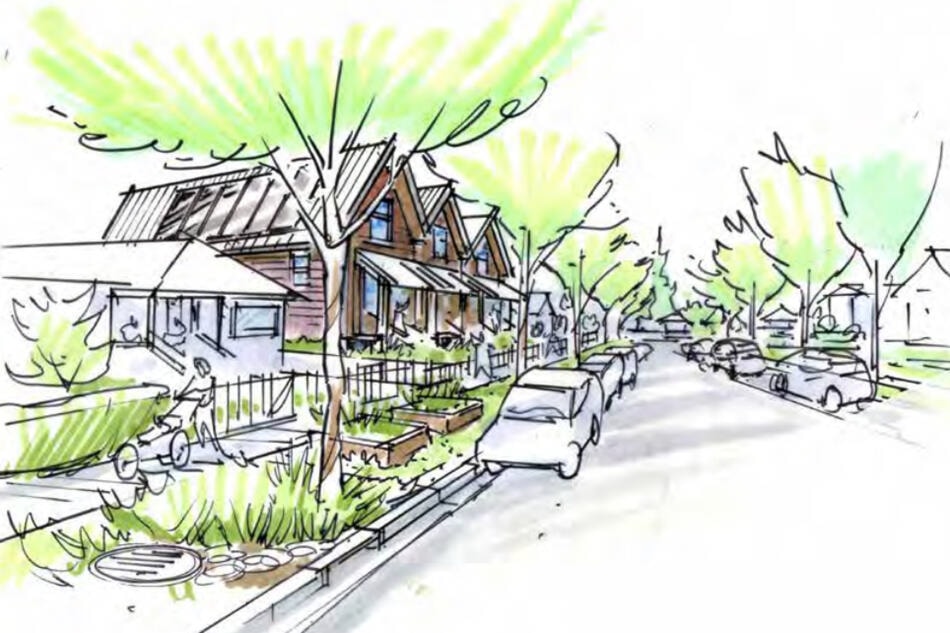The Town of Ladysmith, like most places in B.C., must comply with new provincial housing density legislation, and has come up with some immediate measures.
Town council, at a meeting Tuesday, March 19, voted to direct staff to bring forward zoning amendments to meet requirements to allow for three to four housing units on lots currently zoned for single-family dwellings. Council indicated support for a staff recommendation to achieve the density by allowing single-family dwellings with a suite and a coach house on lots smaller than 0.03 hectares, and duplexes with suites on lots larger than 0.03 hectares. A staff report noted that the approach provides a diversity of housing types that are consistent with the OCP and preserves neighbourhood character.
“We can still have things like development permit setbacks, height [restrictions], etc., however, those regulations cannot be used to unduly restrict the implementation of the unit counts,” said Jake Belobaba, the town’s director of development services.
The province has set deadlines related to compliance with density rules.
The town will need to apply for extensions in areas where it identifies infrastructure deficiencies by June 1, and will need to have its new zoning bylaw in place by June 30. The town will also need to complete a housing needs assessment and amend its official community plan to reflect housing needs.
Belobaba suggested that the housing needs assessment might lead the town to conclude that more “intense” housing development is required, and that other types of density beyond duplexes, suites and coach houses might be desirable.
“We’re not necessarily stuck with this forever. If we want to then expand into townhouses or four-plexes or more combinations, we have the opportunity to do that,” he said. “[The proposed approach] would meet the legislation, it would get us to the June 30 deadline and then it would set us up to adapt later on if we felt the need.”
Coun. Marsh Stevens noted that staff’s recommended housing types are comparatively few considering the range of density options suggested by the provincial government, and Belobaba replied that the zoning changes need to be manageable for town staff right now.
Coun. Amanda Jacobson expressed skepticism that residents will want to construct new housing units on their properties, and Belobaba said he thinks the short-term effects of the new zoning will be seen primarily in newly created subdivisions and in the Old Town as homes reach their end of life.
The provincial government has directed that municipalities cannot hold public hearings related to the new density zoning, and so town staff suggests no consultation at all because it would result in picking and choosing stakeholders with whom to consult.
The province provided the Town of Ladysmith with $192,000 to implement the legislation and accelerate housing construction, and staff has started to spend those dollars on legal and engineering consultation and a temporary planning staff member.
Council members unanimously supported staff recommendations about housing density, the housing needs report, and related recommendations around short-term accommodations, development cost charges and development permitting. They also voted 6-1 to opt into a provincial reporting program on short-term rentals, with Jacobson opposed.
Mayor Aaron Stone said he recognizes that further decision-making on housing density may come in time, but for now, “what I’m hearing from staff is a pragmatic initial step that fits with what we’ve already laid out in our OCP, [while] complying with all the provincial legislation.”
READ ALSO: New housing legislation promises to create 130,000 homes in B.C. in 10 years
